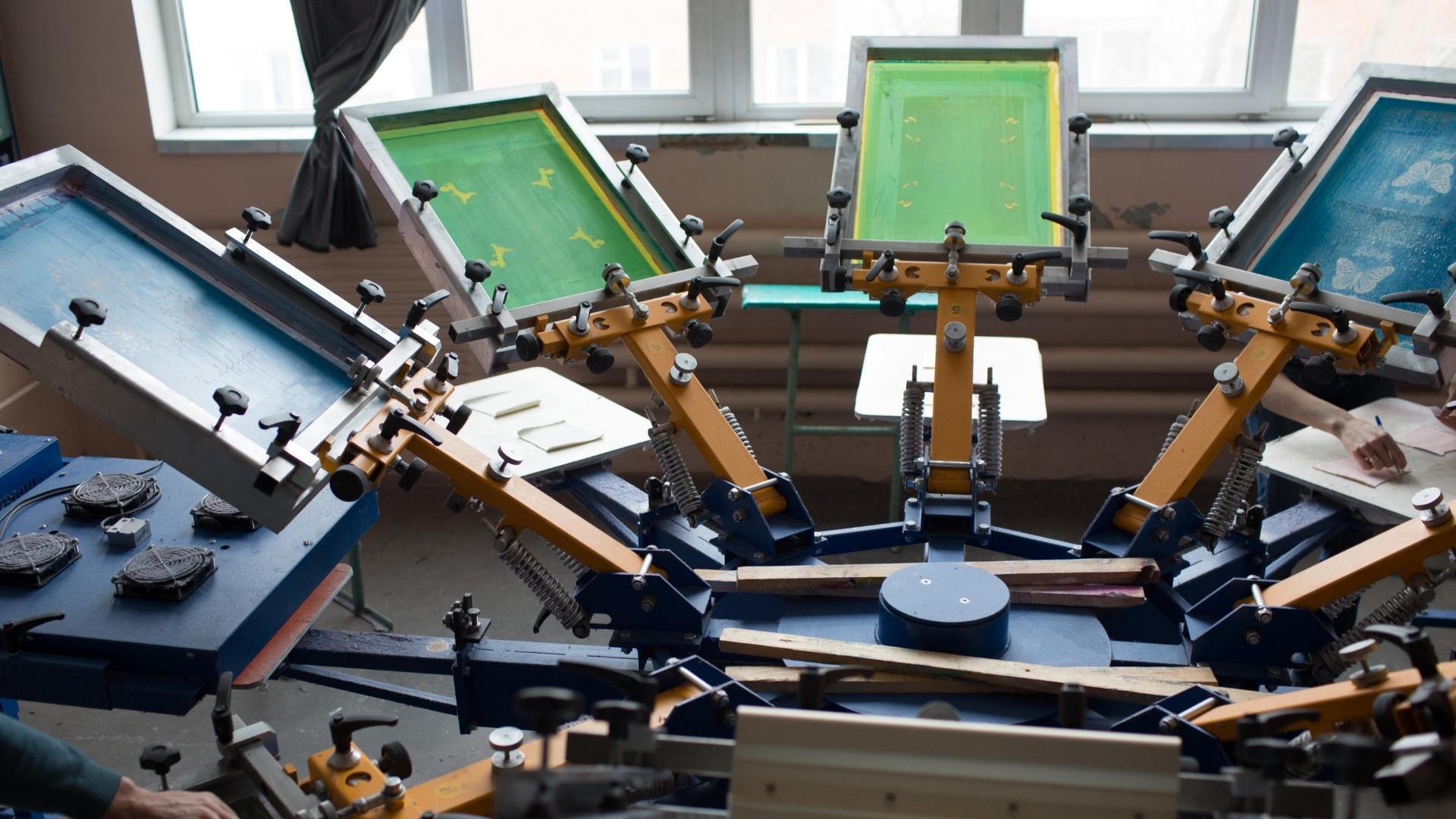The Crucial Overview to Recognizing Screen Printing and Its Versatile Uses
Screen printing has an abundant history that dates back to ancient times, progressing into an innovative technique made use of throughout numerous industries today. This guide explores the complexities of the screen printing procedure, outlining its applications in marketing, style, and home decoration - 10:9 Design Company. Comprehending these basics can open up imaginative possibility for both business and artistic projects. The complying with sections will reveal crucial pointers and techniques to enhance one's screen printing ventures
The History of Screen Printing
Screen printing has roots that trace back centuries, its advancement reflects the artistic and technical improvements of numerous societies. Coming from old China, the strategy was originally made use of for enhancing fabrics and later infect Japan, where it ended up being important to Ukiyo-e woodblock printing. The approach changed to Europe in the 18th century, where it got appeal amongst artisans and industrial printers. The creation of picture emulsion in the 20th century transformed screen printing, permitting more elaborate styles and greater effectiveness. Artists like Andy Warhol even more moved its popularity, using the medium to create iconic jobs that combined commercialism and fine art. By the late 20th century, screen printing had established itself as a functional technique, utilized in vogue, advertising, and art. Today, it remains to develop, integrating electronic technology and broadening its applications throughout various markets.
The Screen Printing Refine Explained
Screen printing transforms imaginative visions right into substantial layouts with a series of accurate actions. Originally, a photo is produced and afterwards moved onto a screen, normally made from fine mesh textile stretched over a frame. A light-sensitive emulsion is used to the screen, which is exposed to light, solidifying in areas not covered by the photo. After washing out the unhardened emulsion, a pattern is developed.
Next, the screen is put over the substrate, whether it be material, paper, or one more material. Ink is after that pushed through the open locations of the stencil utilizing a squeegee, transferring the style onto the substratum below. This process can be repeated for multiple colors, needing different displays for every hue. The printed thing is cured using heat to assure the ink adheres correctly, resulting in a resilient, lively layout all set for usage.
Sorts Of Screen Printing Techniques

In addition, specialized strategies, such as discharge screen printing, eliminate color from the material to develop softer prints, while aluminum foil screen printing applies metallic aluminum foil to accomplish a glossy surface (10:9 Design reviews). Each strategy uses distinct characteristics, dealing with various creative requirements and manufacturing ranges, ultimately broadening the opportunities within the screen printing domain
Applications of Screen Printing in Different Industries

In addition, the signs and marketing markets utilize screen printing for developing captivating displays and banners. This technique permits strong colors and elaborate styles that capture focus. In electronic devices, screen printing is used for applying conductive inks to motherboard, important for element connections. Additionally, the home décor industry embraces screen printing to produce distinctive styles on fabrics and wall surface art. Overall, screen printing acts as a crucial device across diverse fields, improving products with personalized and visually enticing graphics.
Tips for Successful Screen Printing Projects
While taking on a screen printing job, careful attention to information can considerably enhance the final outcome. Choosing top notch materials is important; this includes the screen, inks, and substrates. Making use of suitable mesh counts can influence ink deposition and information resolution. Prep work is equally important; comprehensive cleansing of displays and proper direct exposure times assure crisp prints.
Next off, accurate enrollment is important for multi-color prints. Using alignment tools can assist accomplish accurate layering. Additionally, screening prints on scrap materials prior to manufacturing helps identify possible concerns find out here now without squandering sources.

Often Asked Questions
What Materials Are Finest for Screen Printing on Fabric?
Cotton and polyester blends are perfect for screen printing on fabric because of their sturdiness and ink absorption. Additionally, specialized fabrics like silk or canvas can generate unique textures and coatings, improving the overall design top quality.
Exactly how Do I Clean and Maintain Screen Printing Devices?
To clean up and preserve screen printing tools, one need to consistently wash screens with suitable solvents, examine squeegees for wear, lube relocating parts, and store all items in a completely dry, dust-free setting to lengthen their life-span.
What Are the Ecological Impacts of Screen Printing?
Screen printing can have considerable ecological effects, including chemical waste from solvents and inks, water use during cleansing procedures, and energy consumption. Sustainable techniques and environment-friendly materials are important for minimizing these unfavorable effects.
Can Screen Printing Be Done at Home Successfully?
Screen printing can be successfully done at home with the right materials and methods. Enthusiasts can develop quality prints, though success depends upon their skill level, devices, and understanding of the procedure entailed.
What Are the Expenses Associated With Starting a Screen Printing Business?

Beginning a screen printing business involves expenses for tools, products, and office. Initial expenditures generally range from a few hundred to a number of thousand dollars, depending upon the range, high quality of machinery, and wanted production capacity.
Screen printing has a rich background that dates back to old times, Learn More progressing right into an advanced strategy utilized across numerous sectors today. An additional technique, rotary screen printing, uses cylindrical displays, assisting in continual printing on material rolls, therefore enhancing efficiency for large manufacturings. In addition, specialized methods, such as discharge screen printing, remove dye from the fabric to create softer prints, while foil screen printing applies metallic foil to achieve a glossy coating. In the fashion field, screen printing is commonly made use of to produce vibrant designs on garments, making he said it possible for brands to display their distinct styles. Cotton and polyester blends are perfect for screen printing on fabric due to their sturdiness and ink absorption.